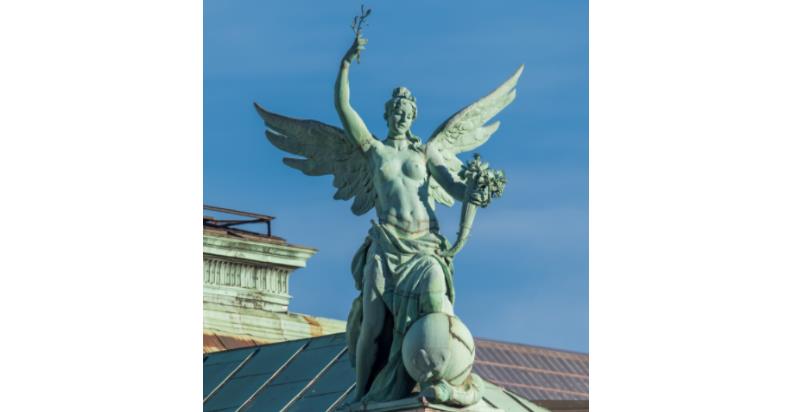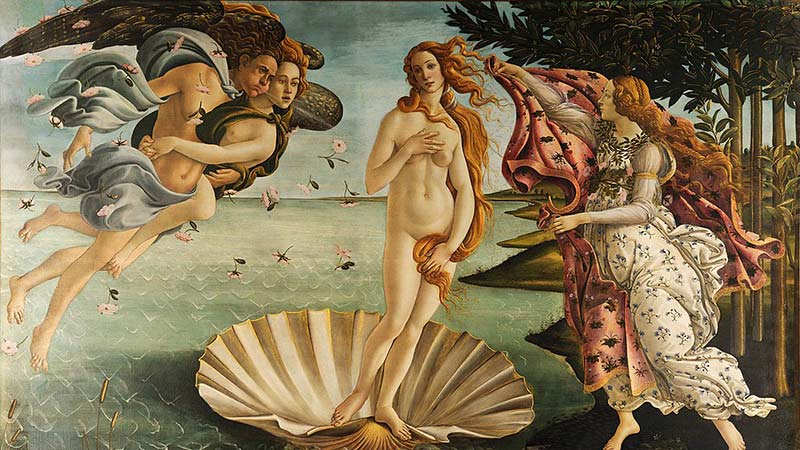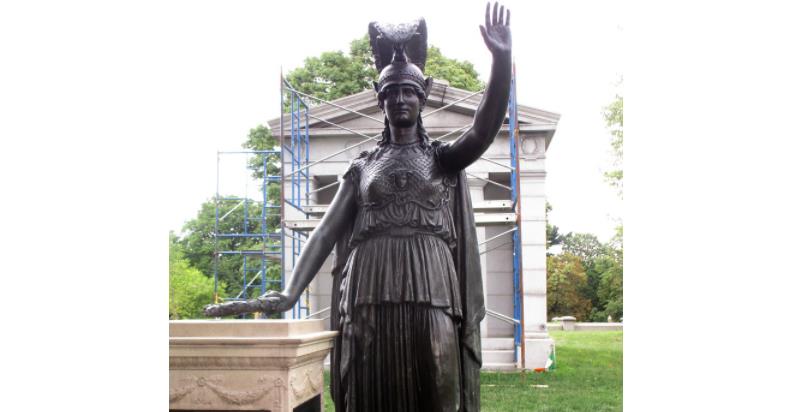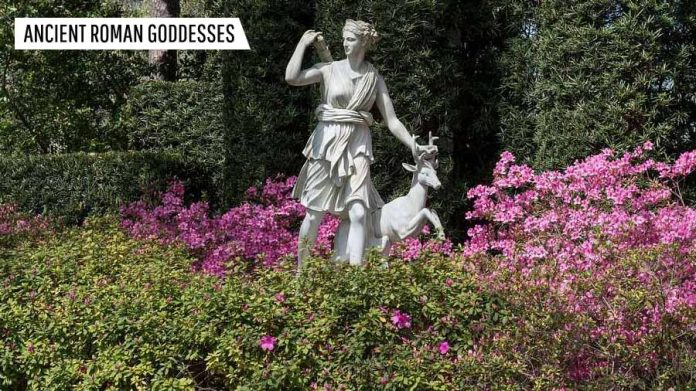Not only are the Roman Gods remembered in history, but the Roman Goddesses are also important as its male counterparts, as it is no less strong or popular. They reflect the strength of women. In various religious rituals in Rome, the mythological stories of deities play a significant role. Already in Rome, we hear much more about the Roman Gods than about the female Gods. Now it is the time to unbox the treasure box of knowledge to add certain information about the Roman Goddesses. You are sure to be overwhelmed by their divine nature, strength, and beauty!
A list of the 10 top Roman Goddesses is available here:
How many Roman Goddesses are there?
Rome has been decorated with the valid statues of the 12 Di Consented. Sometimes in male-female couples, the six Gods and six Goddesses were arranged.
Who is the most beautiful Goddess?
The Greek Goddess of affection and beauty is Aphrodite. She is a member of the 12 Olympian gods living on Olympus Mountain. She is known for the beauty of the Goddesses.
10. Fortuna
| Goddess of: | The Goddess of Fortune |
| Planet: | Venus |
| Symbol: | Globe, Cornucopia, Wheel, Wreath |
| Greek equivalent: | Tyche |
Fortuna Goddess is said to bring both good and bad luck as the personification of fortune and was widely avowed by the Romans. She represents justice and is a Goddess of destiny, portrayed as blind and veiled. She was as blessed as Jupiter, her father. Fortuna is shown to hold a cornucopia, or horn full of corn, in one hand that flowed in abundance from all good things. It was on this site that she was able to give her followers prosperity. On the other hand, a rudder of a ship was showing its control of destiny. She also could be seen throned with the same characteristics, but with a wheel inside the chair that depicts fortunes.

9. Luna
| Goddess of: | The Embodiment of the Moon |
| Planet: | Moon |
| Symbol: | Chariot, crescent moon |
| Greek equivalent: | Selene |
Luna is regarded as Sol, the sun god women’s counterpart. Luna is part of Diva Triformis or the Roman Triple Deity with Proserpina and Hecate. She has a crescent in Roman art and a two yokes chariot. Luna and Sol were distinguished from invisible gods by Varro. The philosopher Macrobius suggested her to be one of the divinities as secret guardians in Rome. During the imperial period, both Luna and Sol reflected Roman rule, synonymous with tranquility and peace, in their thriving religion. The myths of Luna come to the Goddess Selene. Selene and Selene’s Greek counterpart temple is built in the sixth century on Aventine Hill.

8. Salacia
| Goddess of: | The Goddess of Salt Water |
| Planet: | Neptune |
| Symbol: | Dolphin, seaweed |
| Greek equivalent: | Amphitrite |
Salacia was Neptune’s wife, a divinity that rules the oceans’ world, as the former writer Varro pointed out. Neptune, the god of the sea, wanted to marry her, but she loved another when he proposed to her and managed to flee. To preserve its virginity, she hid in the Atlantic Ocean. Neptune then sent a dolphin to convince her to be his Queen and to come back. Salacia finally approved the marriage proposal, so glad Neptune granted a particular spot in the sky to the Dolphin, who now formed a constellation known as Delphinus. The saltwater goddess is dressed in robes and has long hair nets. She is the embodiment of calmness. Her name comes from the Latin sal, which means salt, which refers to the seas and oceans she rules.

7. Diana
| Goddess of: | The Goddess of the Hunt and the Moon |
| Planet: | Moon |
| Symbol: | hunter |
| Greek equivalent: | Artemis |
The association of Diana with forests and animals gave her the power to communicate with and control animals. In Ancient Rome, she was widely praised and revered in pagan religions such as stregheria and Roman neopaganism. Together with Minerva and Vesta, she was one of three maiden goddesses and was close to infants and women. She was Jupiter and Latona’s daughter, and, with her twin brother Apollo, she was born on Delos island. As a goddess, with her sovereignty, impassibility and dominion, she depicts the Heavenly world. She is always depicted as young and lovely. She was a Latin deity universal, and her worship was devoted to many sanctuaries. King Servius Tullius created the shrine on Aventine Hill in his devotion to her. She also had a lot of works of art and drama.

6. Ceres
| Goddess of: | The Goddess of Agriculture and Motherly Relationships |
| Planet: | 1 Ceres |
| Symbol: | Sickle, a sheaf of wheat, cornucopia, cereal |
| Greek equivalent: | Demeter |
The equivalent of the Greek deity, Demeter, is Ceres’s love, and he served humankind. She taught people how to grow crops and grow as a person, as a cultivating goddess. She gave humanity the gift of farming. She had a twofold relation to Jupiter, the divinity of law and order. She was a sister and a wife, and they had Proserpina’s daughter together, who they said lived through her life. On one of Ancient Rome’s seven pinnacles on Aventine Hill, where its temple stood, Ceres was worshiped. On April 19, one of Ceres’s festivals, Cerealia, took place. The Roman rite of agricultural fertility, which took place at the end of May, Ambarvalia, was another specific time of the year for the Goddess of cultivation and fertility.

5. Venus
| Goddess of: | The Goddess of Love, Desire, Sex, and Prosperity |
| Planet: | Venus |
| Symbol: | Rose, common myrtle |
| Greek equivalent: | Aphrodite |
The mother of Cupid and Aneas is Venus, one of Rome’s central deities. The Romans adopted Aphrodite, their Greek counterpart’s mythologies and iconography. Venus is the most original creation in the Roman Pantheon, embodying sex, charm, and allures. Vulcan and Mars are her counterparts. It is seen as a watery symbol that preserves life’s balance. In Roman mythology, Venus is of utmost importance, and all year round, her festivals have been celebrated. On April 1, Veneralia held Fortuna, Prosperity, love, and Desires. Next, on April 23, Vinalia Urbana was celebrated as the Venus and Jupiter wine festival. It was originally a rustic festival of Latin harvest celebrated by wine, Roman food, and fertility.

4. Vesta
| Goddess of: | The Virgin Goddess of Family, Home, and Hearth |
| Planet: | Saturn and Ops |
| Symbol: | The hearth, fire, donkey |
| Greek equivalent: | Hestia |
Just as Hestia was rarely depicted in human form in the Greek Pantheon, Vesta was represented instead by her temples’ fire. Only the priestesses, Vestas, were permitted to enter the temples, and the myth is that their followers can be miraculously impregnated. Jupiter, Neptune, Juno, Pluto, and Ceres were the children of Saturn and Ops. First in Lavinium, also the first Trojan settlement, their worship started. Besides her pureness and virginity, she was also known for her fertility. Despite its pureness, the phallus is frequently contradictory. Ovid said she’s the same as earth because the two of them share the permanent fire.

3. Flora
| Goddess of: | The Goddess of Flowers and Spring |
| Planet: | Moon |
| Symbol: | Flower |
| Greek equivalent: | Chloris |
Flora’s combination with Spring made her an important Roman goddess, representing the beauty of flowers and nature. It is not only related to rejuvenation season but also emerging young people. His Greek counterpart is Chloris. The name of Flora derives from the Latin word flos, which means flower. The Floralia Festival was held on April 28 and May 3, first started in BC 240. The roman people are used to celebrate the renewal of the life cycle. The Rose Festival was on the date of May 23 on her behalf. Flora also became a prominent humanist in the Renaissance, but she did not seem like a powerful image.

2. Minerva
| Goddess of: | The Goddess of Wisdom |
| Planet: | Jupiter |
| Symbol: | Owl of Minerva, olive tree, the serpent of Jupiter, the Parthenon, the spear, the spindle, spiders, and Hellebore |
| Greek equivalent: | Athena |
The Goddess of wisdom, trade, poetry, crafts, and even strategic warfare is Minerva. Minerva was part of Ovid’s Metamorphoses because of its artistic ability. Minerva was regarded as the Greek Goddess Athena from the second century BC. Jupiter recollected his children’s prophesy that overthrew him after Metis had impregnated. Because of the fear that his unborn child finally would surpass him at power, he swallowed Metis and was said to have caused Jupiter a steady headache from inside before Minerva was born. Vulcan split the head of Jupiter with a hammer, and Minerva emerged as adulthood with full armor and arms to rid himself of pain. Minerva has also been known as Minerva Medica, which means medicine goddess.

1. Juno
| Goddess of: | The Queen of Goddesses |
| Planet: | Jupiter |
| Symbol: | sacred Lily and lotus |
| Greek equivalent: | Hera |
The Roman counselor and protector of the State are Hera, the Greek Queen of goddesses, Juno. Saturn’s daughter, Juno, is Jupiter, King of God’s sister and wife. She is a war god’s mother and a fire god, Mars. Juno also links the ideas of vitality, energy, and eternal youthfulness to the Goddess of marriage and childbirth. She was called “Regina” or Queen as the Patron Goddess of the Roman Empires, and was a Capitoline Member. Her traditional look gives her an aggressive appearance. Also known as Juno Moneta, she is considered to guide the Roman Empire’s finances. After it is named the month of June, her theology is one of the most complexes, so she has many epithets, names, and titles with different meanings. Juno Lucina, Juno Caprotina, Juno Curitis, Juno Sospita and Lucina are among these.

Conclusion
Like the Roman divinities, there are Roman divinities to portray everything. These deities have the power to control events around the world with their heavenly beauty. They can protect the kind-hearted people and punish the wrongdoers. In terms of its multilayered relationships between the deities, Roman Mythology is complex, and Rome is considered to have the greatest pantheon of gods.
